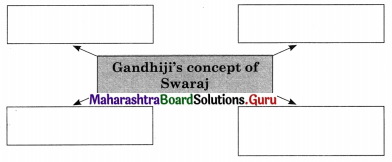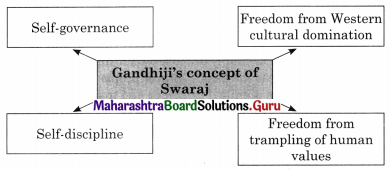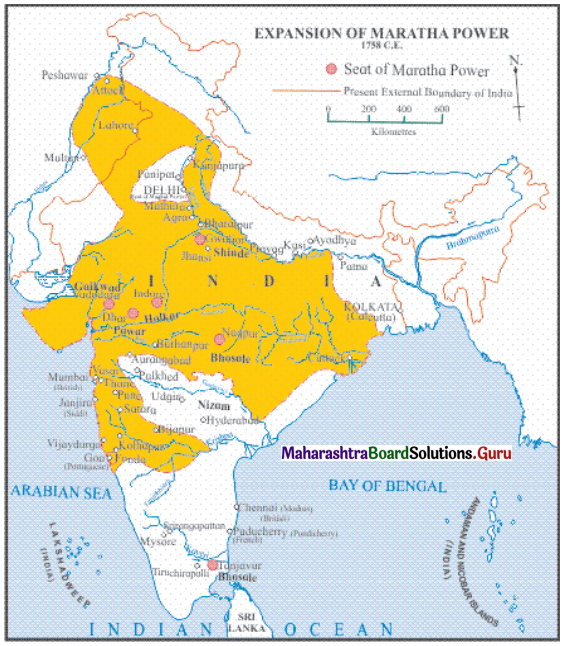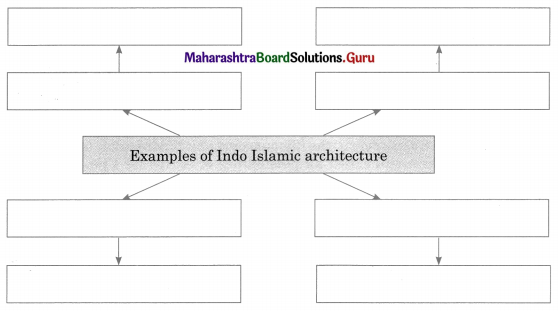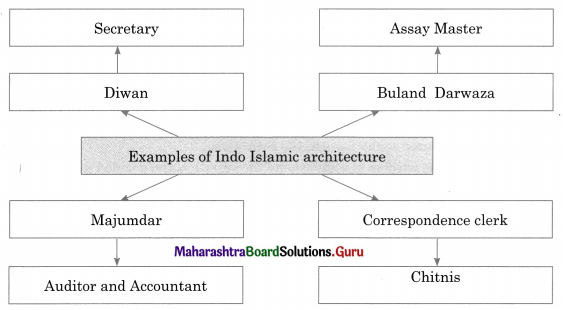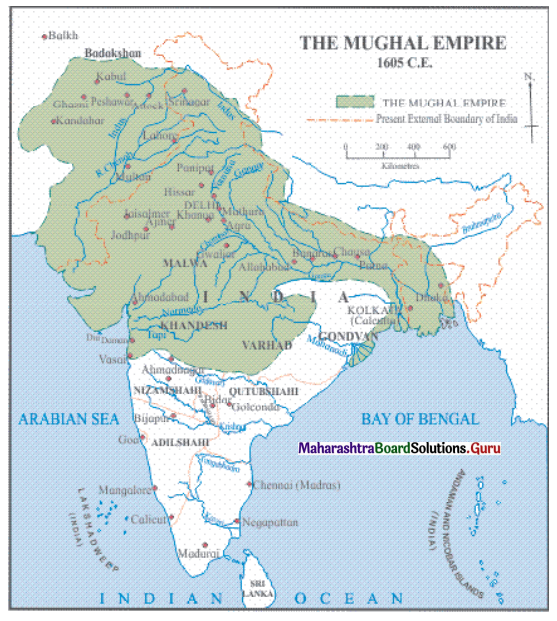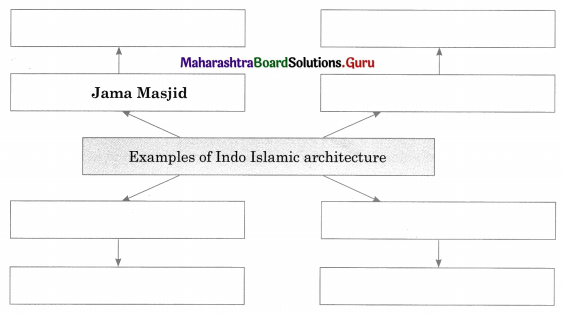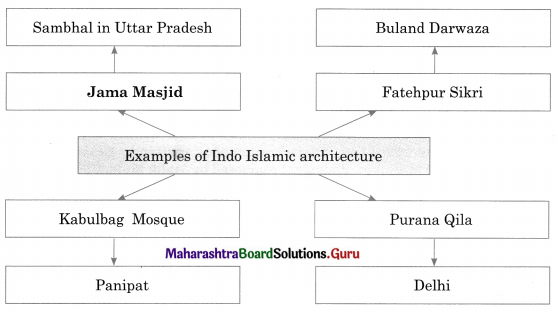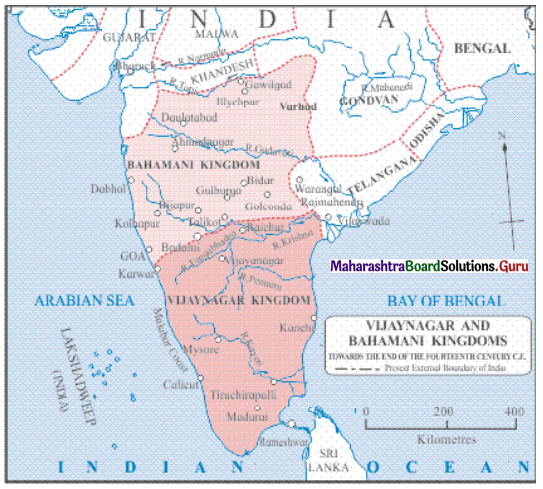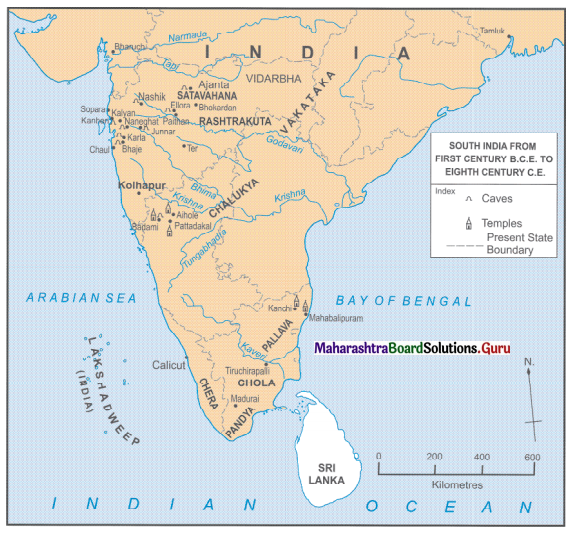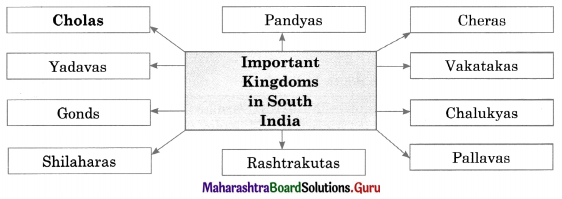Balbharti Maharashtra State Board Class 11 Political Science Important Questions Chapter 3 Equality and Justice Important Questions and Answers.
Maharashtra State Board 11th Political Science Important Questions Chapter 3 Equality and Justice
1A. Choose the correct alternative and complete the following statements.
Question 1.
___________ equality is reflected in Universal Adult Franchise. (Social, Political, Natural, Economic)
Answer:
Political
Question 2.
In ancient Indian society, justice was associated with ___________ (Moksha, Artha, Dharma, Yodha)
Answer:
Dharma
![]()
Question 3.
According to ___________, the state is an instrument of oppression of workers. (Karl Marx, Robert Nozick, Dr. Ambedkar, Plato)
Answer:
Karl Marx
1B. Identify the incorrect pair in every set and correct it.
Question 1.
(a) Aristotle – The Politics
(b) Thomas Hobbes – Leviathan
(c) Plato – The Republic
(d) Karl Marx – A Theory of Justice
Answer:
(d) Karl Marx – Communist Manifesto or John Rawls – A Theory of Justice
Question 2.
(a) Aristotle – Natural equality
(b) Karl Marx – Classless society
(c) Tarabai Shinde – Emancipation from caste system
(d) Laski – Justice as truth and morality
Answer:
(d) Plato – Justice as truth and morality
1C. State the appropriate concept for the given statement.
Question 1.
Application of the abstract concept of justice through the implementation of the law.
Answer:
Legal justice
![]()
Question 2.
Law treats all citizens equally.
Answer:
Equality before the law
Question 3.
Section of society that owns means of production.
Answer:
‘Haves’
1D. Answer in one sentence.
Question 1.
Who propounded the idea of a classless society?
Answer:
Karl Marx propounded the idea of a ‘classless society.
Question 2.
Name two Indian reformers who focused on gender inequality.
Answer:
Mahatma Phule, Mahatma Gandhi focused on gender inequality.
Question 3.
What was Tocqueville’s idea of equality?
Answer:
Tocqueville’s idea of equality developed in the process of abolition of the feudal system and the establishment of democracy.
Question 4.
What is the significance of Article 17?
Answer:
Article 17 deals with the abolition of Untouchability.
![]()
Question 5.
What is John Rawls’s view of Justice?
Answer:
John Rawls’s view of justice relates to Distributive Justice and the principle of fairness.
1E. Complete the following sentence using appropriate reason.
Question 2.
Equality is fundamentally a leveling process because
(a) it is an attempt to create conditions where everyone has an equal opportunity to progress.
(b) it refers to the absence of special privileges to or discrimination against any person or group.
(c) it is one of the pillars of democracy.
Answer:
(b) it refers to the absence of special privileges to or discrimination against any person or group.
Question 2.
Karl Marx advocated a socialist system because
(a) it will ensure an equitable distribution of resources.
(b) it advocated procedural justice.
(c) it would lead to capitalism.
Answer:
(a) it will ensure an equitable distribution of resources.
1F. Find the odd word in the given set.
Question 1.
Hobbes, Locke, Rousseau, Marx.
Answer:
Marx (all others wrote about state of nature)
Question 2.
Socrates, Plato, Aristotle, Rawls.
Answer:
Rawls (all others were ancient Greek thinkers)
![]()
Question 3.
Justice Ranade, Dr. Ambedkar, Dr. Amartya Sen, Gandhiji.
Answer:
Dr. Amartya Sen (differing view of equality)
Question 4.
Political equality, Civil equality, Economic equality, Social equality.
Answer:
Political Equality (available only to citizens)
2A. State whether the following statements are true or false with reasons.
Question 1.
Karl Marx propounded the idea of a classless society.
Answer:
This statement is True.
- Karl Marx rejected the liberal view of equality and instead propounded the concept of Socialism. He felt that the State, which is in the hands of the capitalist class (Haves) is an instrument of exploitation of workers.
- A Socialist system will ensure the dignity of workers an equitable distribution of resources and eliminate class distinctions, leading to a classless society.
Question 2.
Absolute equality is neither possible nor desirable.
Answer:
This statement is True.
- Equality implies a society where any person is not denied opportunities or facilities merely on criteria such as gender, race, etc. It means the absence of discrimination or special privileges.
- Equality does not mean uniformity Natural inequality is a fact. Absolute equality is not desirable as it will destroy individuality.
![]()
Question 3.
Social justice is essentially reformative and distributive.
Answer:
This statement is True.
- The concept of social justice implies equal social opportunities for every individual to progress to the fullest possible extent. Social justice is reformative i.e., it aims at a revision of the social order and involves the eradication of existing social evils.
- Social justice is also distributive i.e., available resources should be equitably distributed to ensure social welfare.
Question 4.
Considering the special needs of certain sections of society conflicts with the principle of equality.
Answer:
This statement is False.
- Equality means the absence of discrimination or special privileges to some as well as the presence of adequate opportunities for every individual.
- Consideration of the special needs of some disadvantaged sections of society like women, the disabled, senior citizens, Dalits, tribals, etc. is a democratic necessity and in fact, helps to promote social equality.
2B. Complete the concept maps.
Question 1.

Answer:

Question 2.

Answer:

![]()
Question 3.

Answer:

3. Answer the following.
Question 1.
Explain the facets of equality.
Answer:
The facets of equality are:
- Absence of special privileges to or of discriminations against anyone in the matter of socio-economic and political rights. No person or group should have special conditions that are denied to a large majority.
- For e.g., in the caste hierarchy, the lower castes were discriminated against while upper castes flourished, as they had special status and privileges.
- Equality before the law and equal protection of the law – The law is equally applicable to everyone irrespective of economic or social status, race, creed, etc.
- Equality of opportunity – To enhance one’s potential and to develop one’s personality irrespective of considerations like ethnicity, gender, community, etc., deprived sections must have provisions for education, employment, and social well-being to enable fair competition with others.
- Absolute equality is neither possible nor desirable as equality in no way implies uniformity.
Question 2.
Explain Karl Marx’s view of equality and justice.
Answer:
Karl Marx rejected the liberal idea of equality and propounded the socialist idea of equality. According to him, equality can be achieved through the creation of a classless society. Marx gave importance to the emancipation of workers from exploitation and stressed equal distribution of means of production. According to him, equality thus achieved would be different from the liberal ideas of equality.
![]()
Karl Marx considered the State as an instrument of exploitation of workers. This instrument was in the hands of the capitalist class. Since laws are made by the State, it is natural that they protect the interests of the capitalists. Marx maintained that the transformation of the capitalist system into a socialist system will ensure an equitable distribution of resources. The socialist system gives a priority to the right to equality of the ‘have-nots’ rather than the right of property of the ‘haves’. Thus, according to Marx, implementing socialist agenda is considered to be justice, and that the judiciary should be committed to Socialism.
Question 3.
Explain John Rawl’s concept of justice.
Answer:
John Rawls was an advocate of Social Justice, who advocated the concept of Distributive Justice. Rawl’s theory of social justice focuses on the just desire of individuals in society. In his book, ‘A Theory of Justice’, Rawls argues that the concept of freedom and equality are not mutually exclusive. He concludes that for justice to be truly just, everyone must be accorded the same rights under the law.
Rawls has put forth two principles of social justice:
- Fundamental rights and duties must be uniformly acceptable. A system can be just only when those at the bottom of the system are able to benefit from it.
- There must be equality of opportunity for all the public offices that are available. This is Rawls’s concept of fairness.
Question 4.
Explain the three indicators of equality.
Answer:
The concept of equality is a central idea of political philosophy. There are three indicators of this concept-
- Welfare equality: Fulfillment of needs of an individual is more important than what is readily available for him.
- Equality of resources: It means equitable distribution of the available resources.
- Equality of capabilities: The usage of resources by people is more important than merely the availability of those resources.
4. Answer the following in detail with reference to the given points.
Question 1.
Explain equality.
(i) Meaning of Equality
(ii) Facets of Equality
(iii) Importance of Equality
Answer:
(i) Meaning: Equality is an important ideal in society. Equality does not mean uniformity. It signifies that all human beings have equal worth, irrespective of their ethnicity, religion, caste, etc. Today, equality is looked at as a political goal as well as the basis of Liberty and Justice. It has a moral and collective dimension as it includes empathy and tolerance.
Natural inequalities are a reality since humans are not equal in physical or intellectual aspects. The struggle for equality is to do away with the restrictions and burdens of man-made inequalities that are created on the basis of religion, caste, race, status, wealth, etc. Equality is the attempt to create conditions where every individual is given equal opportunity to develop and progress.
![]()
(ii) The facets of equality are:
- Absence of special privileges to or of discriminations against anyone in the matter of socio-economic and political rights. No person/group should have special conditions that are denied to a large majority. For e.g., In the caste hierarchy, the lower castes were discriminated against while upper castes flourished.
- Equality before the law and equal protection of the law – The law is equally applicable to everyone irrespective of economic or social status, race, creed, etc.
- Equality of opportunity – To enhance one’s potential and to develop one’s personality irrespective of considerations like ethnicity, gender, community, etc. Deprived sections must have provisions for education, employment, and social wellbeing to enable fair competition with others.
- Absolute equality is neither possible nor desirable as equality in no way implies uniformity.
(iii) Importance of Equality:
- Equality is necessary to uphold the dignity of the individual.
- It is necessary to create a just society.
- It is necessary to promote mutual respect among members of society.
- It helps to bring about the fraternity.
- Liberty and equality are the cornerstones of a democracy.
Question 2.
Explain the types of equality.
(i) Natural Equality
(ii) Social Equality
(iii) Civil Equality
(iv) Political Equality
(v) Economic Equality
Answer:
(i) Natural Equality considers that all human beings are equal though they differ in inabilities. Every person should get an equal opportunity to develop his/her potential. Early Greek thinkers like Plato and Aristotle did not believe in natural equality. However, thinkers like Hobbes, Locke, and Rousseau explained natural equality in the ‘State of Nature’.
(ii) Social Equality refers to the absence of unreasonable social barriers or discrimination such as those based on race, religion, caste, gender, status, etc. No person must be viewed as superior or inferior merely on the basis of birth, ethnicity, or social position. However, social inequality is prevalent all over the world even today. Legislations, education, and economic progress can help to reduce social inequality for e.g., in India Article 17 of the constitution deals with the abolition of untouchability.
(iii) Civil Equality means that civil rights are equally available to all individuals. There is equality before the law and equal protection of the law. However, special laws made for the protection or upliftment of weaker sections of society such as tribals, backward classes, women, etc., do not violate the principle of equality.
(iv) Political Equality is possible only in a democracy. It refers to the right of citizens to participate in the affairs of the state. It is based on the principle of political participation and Universal Adult Franchise.
![]()
(v) Economic Equality – When wealth is concentrated in the hands of a few (economic inequality), then political power and social ranking are also monopolized by them, resulting in exploitation of the underprivileged sections of society.
Economic equality does not imply equal distribution of wealth or equal income irrespective of the nature of work.
Economic equality implies the following:
- Reduction in wide disparities of wealth.
- Prevention of concentration of wealth and income in the hands of a few persons.
- Absence of any kind of economic exploitation, denial, or subjugation.
- Availability of essential goods and services i.e. minimum needs must be satisfied first.
- Reasonable economic opportunities for individuals to develop themselves and to progress.
- Adequate scope for work and for decent wages.
Question 3.
Explain Justice.
(i) Meaning of Justice
(ii) Types of Justice
Answer:
(i) Meaning: Justice implies righteousness which is used as a basis for judging values and conduct. It is an ancient concept. Greek philosopher, Socrates considered justice as a political virtue. Plato identified justice with truth and morality while Aristotle expressed that justice can be achieved in a society only when there is equality and balance. In ancient India, justice was associated with the concept of ‘Dharma’. The term justice refers to ‘a state of affairs in which every individual has exactly those burdens and benefits which are due to him.
(ii) Types of Justice:
- Natural Justice – This concept is linked to the very existence of human beings and was advocated by ancient Greek and Roman philosophers. Humans can intrinsically and universally understand concepts of right and wrong. Hence there is no need for man-made law.
- Legal Justice – John Austina considered law as a means to eliminate injustice and to establish a just society. Justice is a precondition to law.
- Social Justice – The concept of social justice implies equal social opportunities for every individual to progress to the fullest possible extent. Social justice is reformative i.e., it aims at a revision of the social order. It involves the eradication of existing social evils.Socialjusticeisalsohisfridufioei.e., available resources should be equitably distributed to ensure social welfare. It is not just related to individuals or groups, but to society at large. Social justice is dynamic i.e. it modifies according to changing needs and situations.
![]()
The two approaches of social justice are
- Procedural justice advocated by Nozick i.e., everyone should be treated equally before the law and proper legal procedures must be followed.
- Social justice was propagated by Marx, Rawls, and Dr. Ambedkar.


